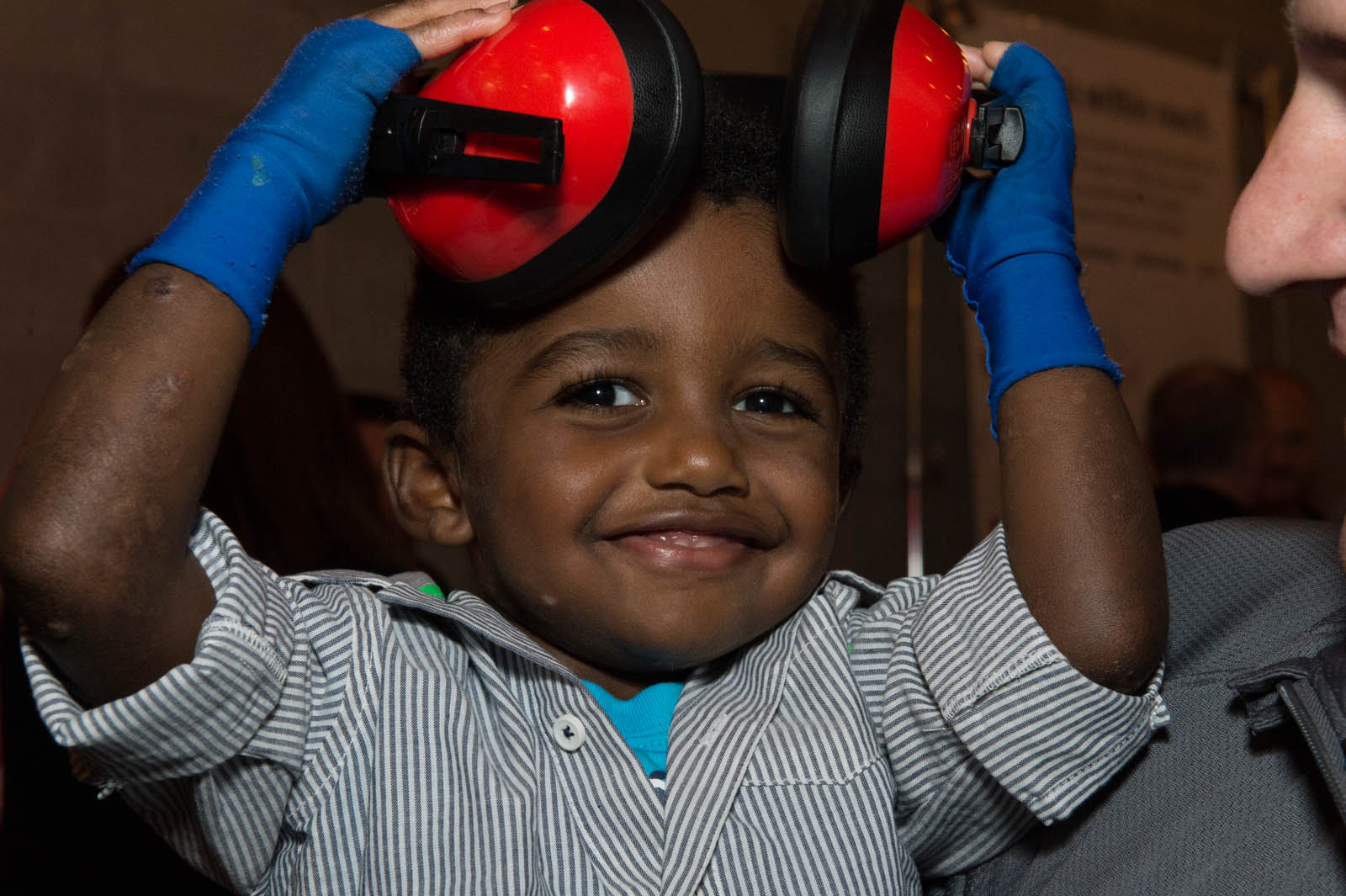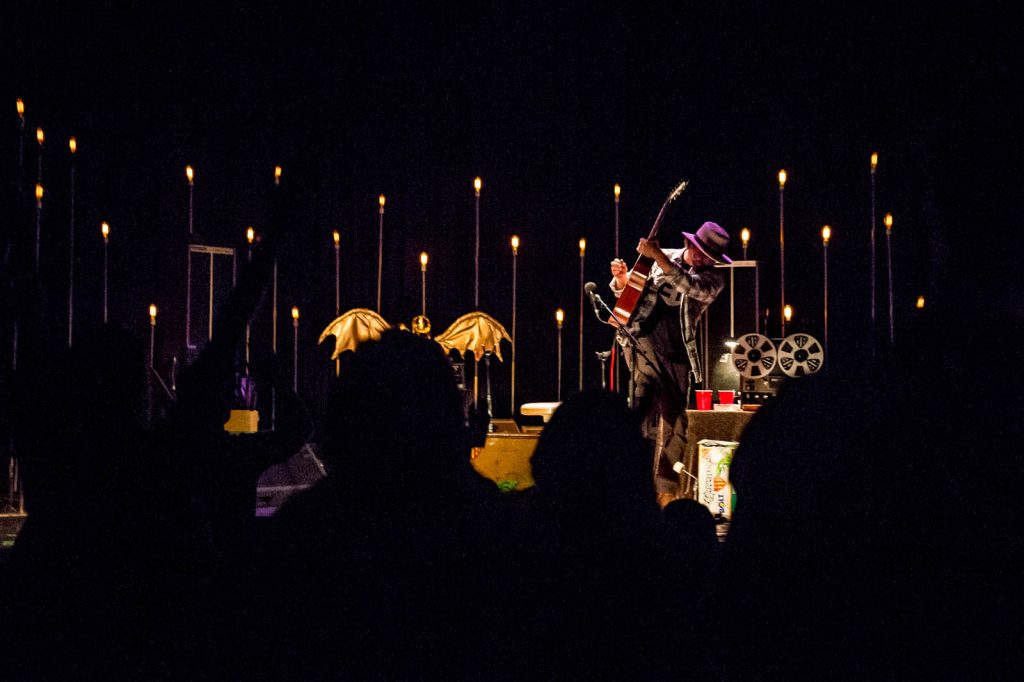
Eddie Vedder performs live at Microsoft to raise money for EB, a rare genetic skin disorder
Imagine having skin so fragile that the slightest touch could cause painful blisters. Imagine still, the only treatment available is expensive and painful. This is the reality for thousands of children who suffer from a genetic skin disease called Epidermolysis Bullosa, or EB.
For 2-year-old Ermias Blank and his family, living with EB means that a simple task, such as bath time, becomes a painful ritual that is spent popping puss-filled blisters and re-bandaging open sores. Because every tear in the skin makes Ermias vulnerable to infection, his family fears for his health and his future. Not only is Ermias at risk of major trauma to his skin, the disease also degrades internal organs, which means that many people with EB won’t live to adulthood.
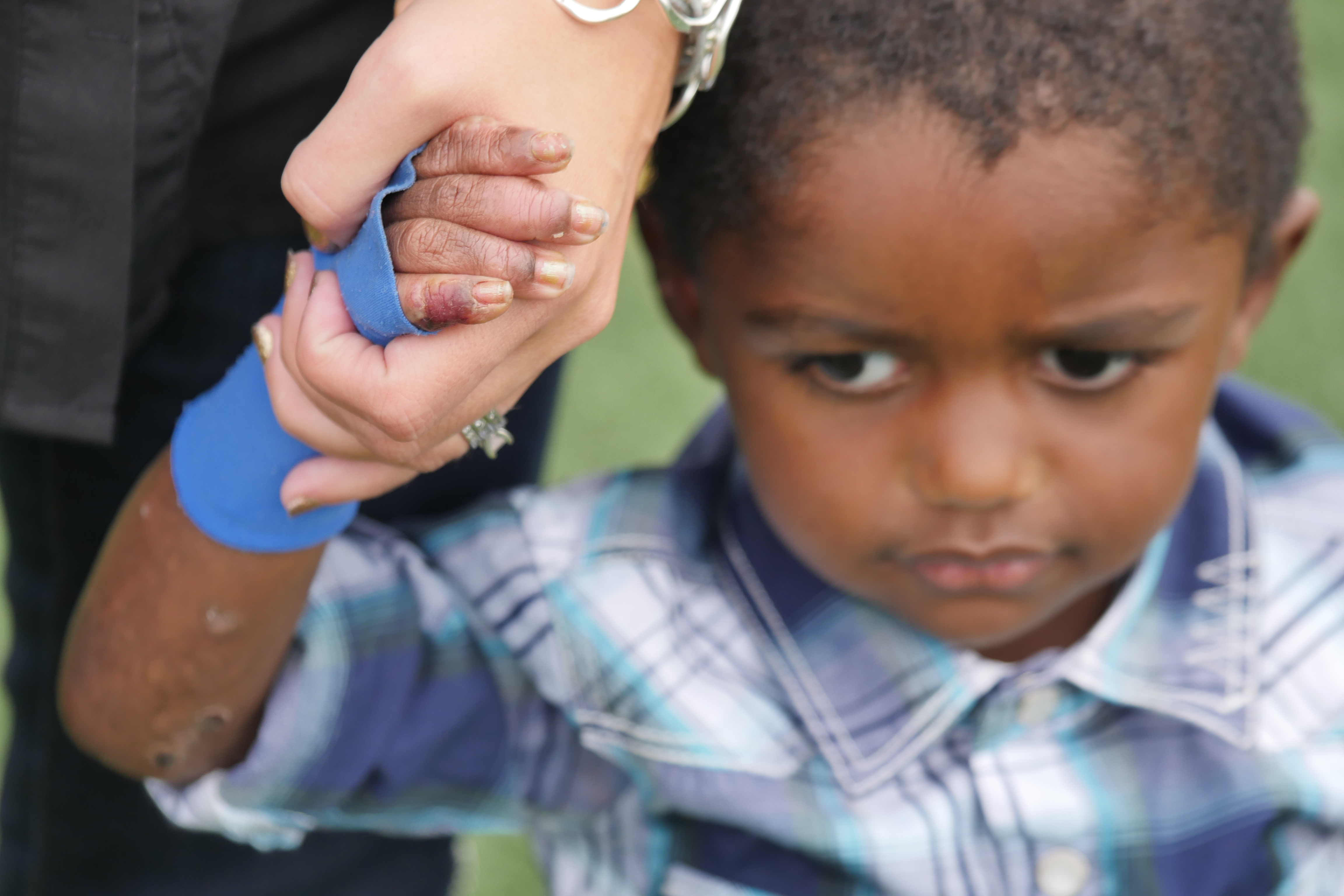
“We live with not knowing what the end looks like,” says Ermias’ mom Lacey Yantis. “It’s a lifetime of special education, of crushed dreams; it means waves of emotional exhaustion that are almost as debilitating as the disorder itself.”
While there is currently no cure for EB – there is hope.
Jakub Tolar, M.D., Ph.D., is working to develop a genomic mapping technique to identify EB before birth and fix a person’s genes if they are at risk for developing the disease. If successful, his research could potentially be applied to cure more than 5,400 other rare genetic disorders – helping upwards of 30 million Americans – most of them children.
Pearl Jam frontman Eddie Vedder played a concert at Microsoft Production Studios, Thursday, to give Tolar’s research a financial boost. Ninety Microsoft employees secured their tickets through an online auction as part of the company’s annual Employee Giving Campaign. Concert proceeds benefitted the EB Research Partnership, a not-for-profit organization co-founded by Eddie and his wife Jill Vedder, along with Heather and Ryan Fullmer and Jamie and Alex Silver, who both have sons with EB.
“It was unbelievable, indescribable. Microsoft plus Eddie Vedder and the cause, a once-in-a-lifetime experience,” says John Russell, a customer success manager, who counts working for Microsoft the “pinnacle” of his career, and seeing Vedder in such an intimate setting, tops on his bucket list.
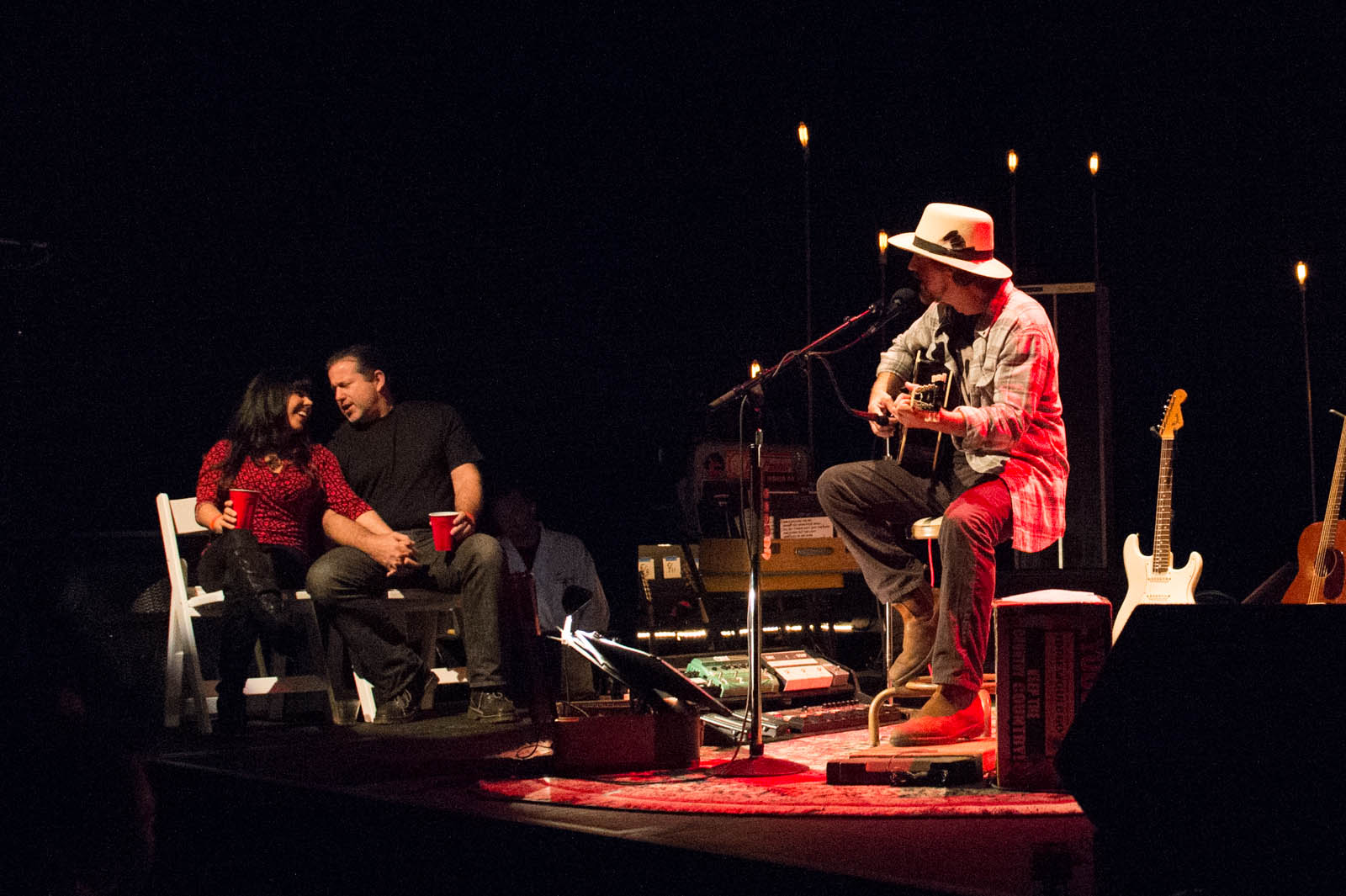
“Incredible. Best show I’ve ever been to,” adds Tom Moran, a principal program manager lead for Microsoft’s Customer and Partner Experience group. “It’s amazing how well he connects with his audience, whether it’s 90 or 90,000.” As the biggest donors of the evening, Moran and his wife, Val Cole, who met while working at Microsoft, were invited onstage as Vedder sang, “Just Breathe,” the couple’s wedding song.
Two-year-old Ermias – likely the youngest fan of Pearl Jam – joined everyone in the audience.
“It’s very hard to describe until you meet the young folks with EB, and they make you realize how much you take for granted,” Vedder says in a video about EB produced by Microsoft Production Studios and World Famous. “You also realize that these are some of the strongest, coolest, most admirable people on the face of the Earth. EB is something that we not only can do something about, we just have to.”
Silver, chairman of the EB Research Partnership, says he’s thankful for the efforts of Microsoft employees, and forever grateful for the commitment that Eddie and Jill Vedder have made to curing EB.
“There’s nothing worse than the feeling that you can’t help your child. You never think your child is going to be the one who suffers from a rare disease like EB,” says Silver. “But when you combine the financial support of Microsoft’s employees with the musical talent of Eddie Vedder, and the technical skill of Dr. Tolar, you can heal this awful disease to make sure no other child has to suffer the way that thousands do now.”
The odds of getting EB, or another genetic disorder like it, are rare. However, the disease is not limited to affecting one demographic, like many other rare diseases, says Tolar, a professor of pediatric blood and marrow transplantation and director of the Stem Cell Institute at the University of Minnesota.
“The basis of the disorder is a change in one of the seven billion letters in the human genome. We all have about 200 of these faulty letters in our genome. Two people who have the same faulty letters, but don’t know it, have children who inherit the disorder,” he explains. Tolar’s research allows him to edit that genomic sentence by removing these faulty letters, ultimately eliminating the root cause of EB.
If it’s effective, this technique could be applied to similar rare genetic disorders that ravage other tissues all over the body like the liver or the brain. “The origin of these disorders is the same,” adds Tolar. “It’s a misspelling in the genomic alphabet that can be corrected.”
The EB Research Partnership has raised more than $3 million for important research projects, including Tolar’s – but more still needs to be done.
“Funding from the National Institutes of Health is a lottery, a competition,” says Tolar. “What we need are people who are good and noble enough who realize they can do something to support this. The EB Research Partnership has been a tremendous resource to our research efforts.”
Vedder’s concert was a step in the right direction.
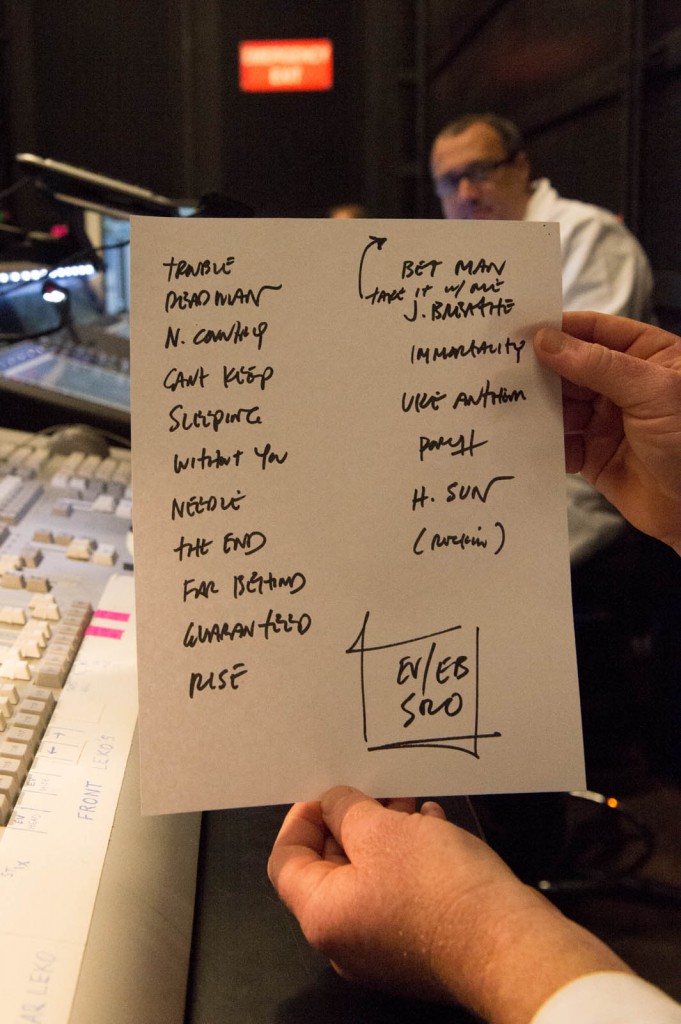
“The beauty of the Microsoft Employee Giving Campaign is that employees do what we can for the causes we care about. Together, with Microsoft’s support, we really do make a difference,” says Kara Costa, senior manager of Business Development and Marketing for Microsoft Production Studios.
Costa temporarily left her position at Production Studios to become what Microsoft calls a “loaned professional,” seven individuals selected from across the company to lead the Giving Campaign for four months.
“Sometimes the amount of bad news can be overwhelming and we feel powerless to change things. This is a story of hope. This cure is within reach,” Costa explains. “I felt so lucky and fortunate to be at a company like Microsoft that allows me this opportunity to bring awareness to this disease and inspire people to cause a wave of healing for millions.”
Since 1983, Microsoft employees have raised more than $1 billion for charitable causes through the company-wide Employee Giving Program, an effort that’s highlighted every October and continues year-round. Microsoft matches employee donations dollar for dollar and volunteer time at $17 per hour to nonprofit organizations for up to $15,000 per employee per year.
“Our Employee Giving Campaign is awe-inspiring because our employees really strive to change the world for the better” says Karen Bergin, director, Citizenship and Public Affairs at Microsoft. “We are constantly looking for ways to increase our impact from a corporate perspective, while supporting our people as they help make a difference through their chosen causes.”
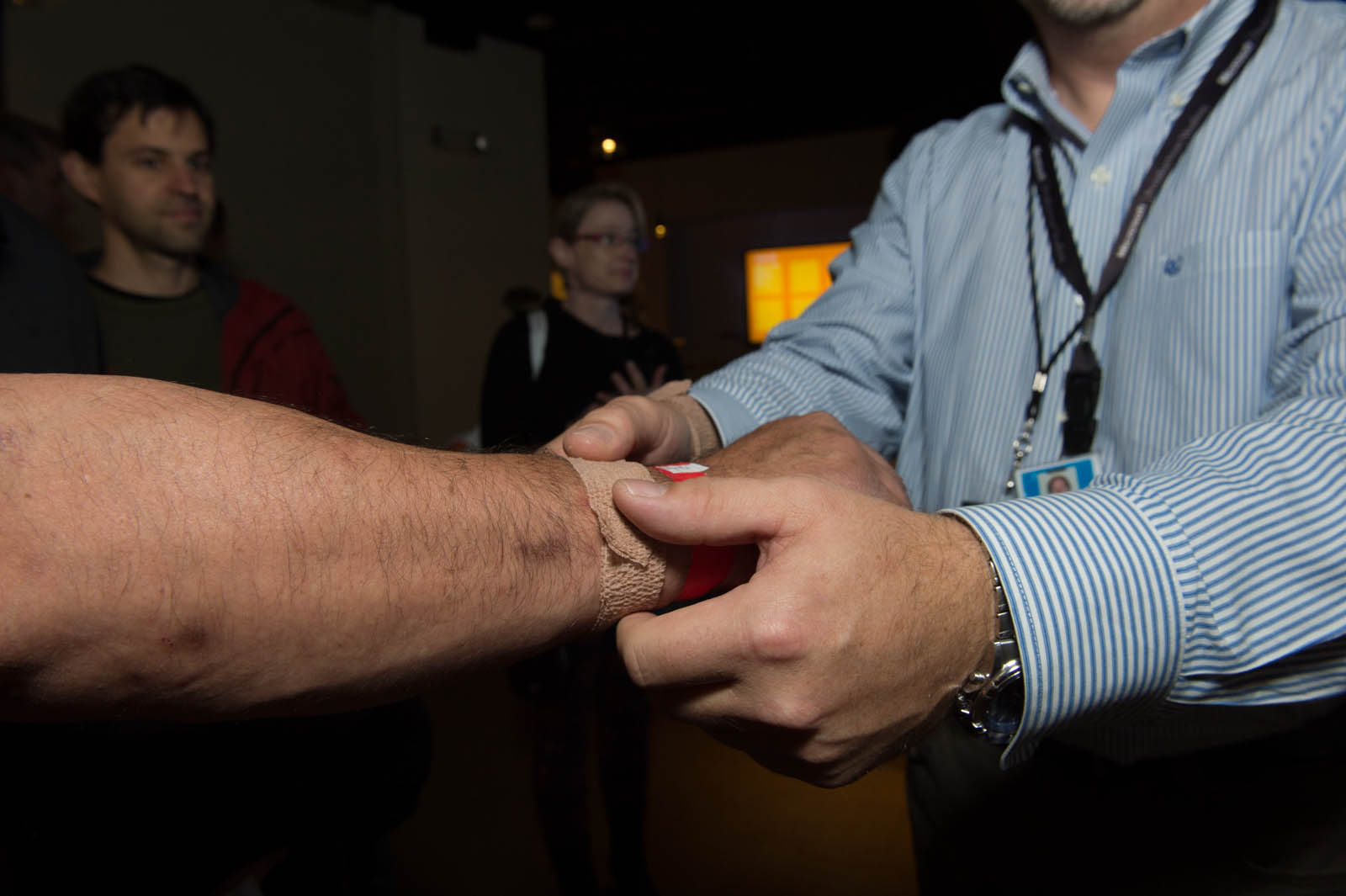
Bergin says the EB effort is a great example of the creativity and passion inherent in the DNA of the Employee Giving Campaign, and Microsoft itself. “It shows the amazing impact our employees can have when they generously combine their talent and time to raise money to help others less fortunate.”
While they continue to make progress, Silver cautions that there is still a long way to go.
“Awareness is important, but awareness doesn’t drive research,” he says. “We want to make it such that the constraining resource is no longer going to be money, but the science itself. Help us give us our children the gift of time. Please donate.”
For more information, or to donate, visit the EB Research Partnership.
Lead photo credit: Jim Bennett.





